Answered step by step
Verified Expert Solution
Question
1 Approved Answer
Please complete the WBS graphic and based table (last 4 pictures) on the case provided please! this is the only infornayion that was given Mason
Please complete the WBS graphic and based table (last 4 pictures) on the case provided please! 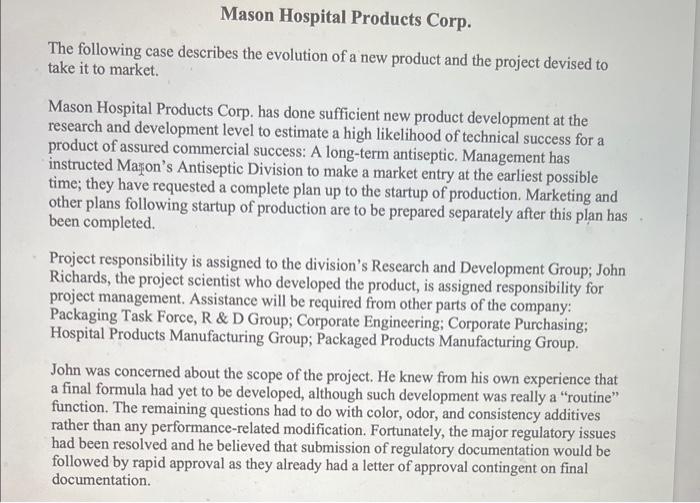


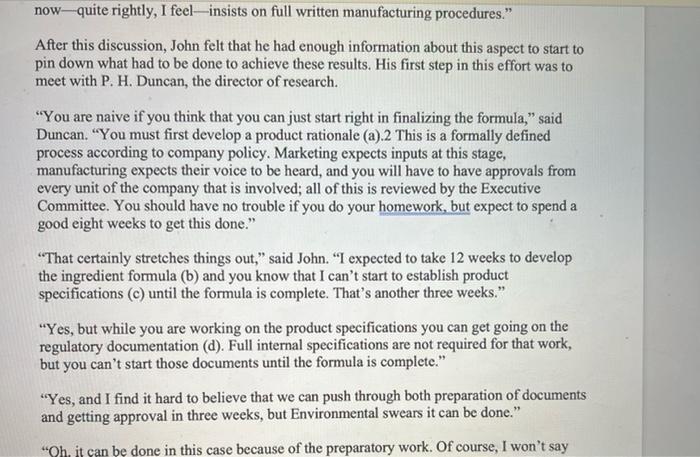
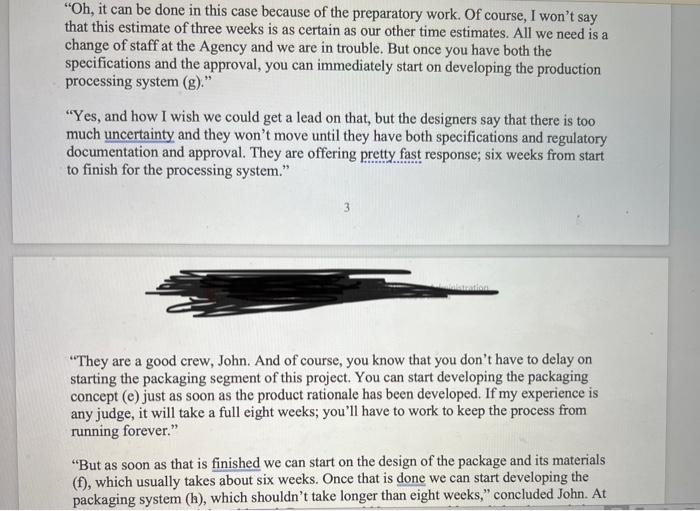
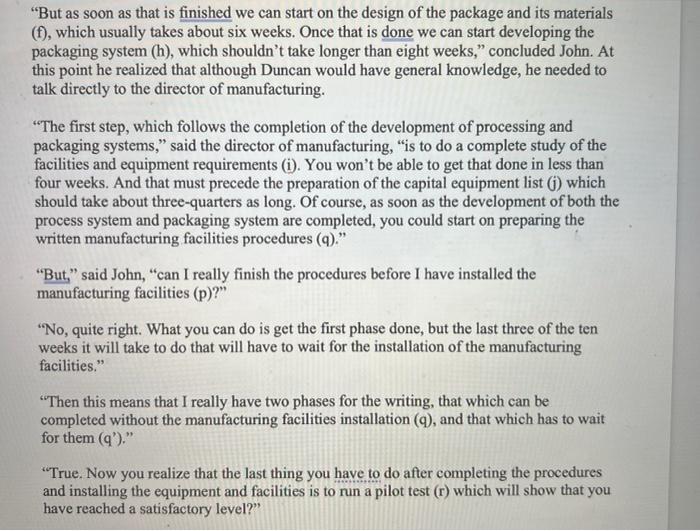
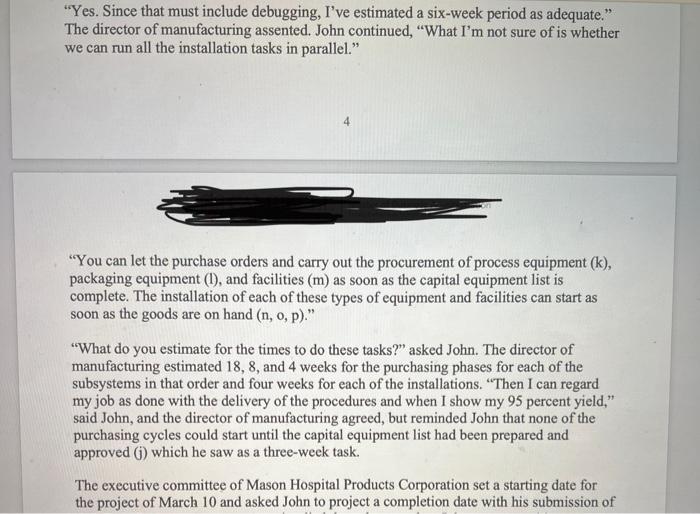
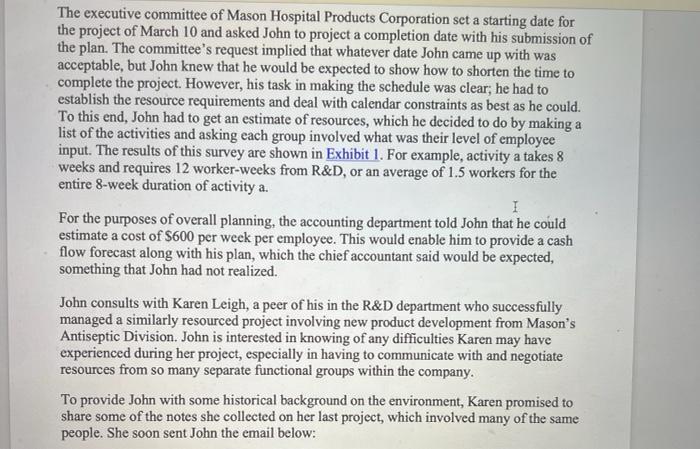
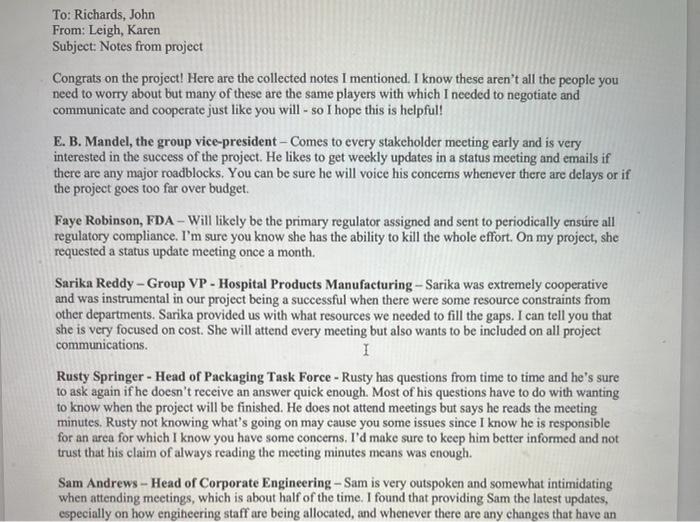
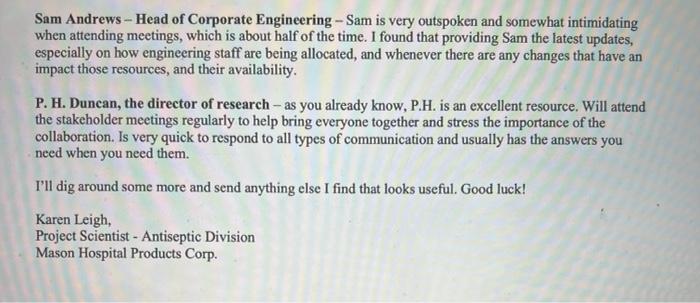
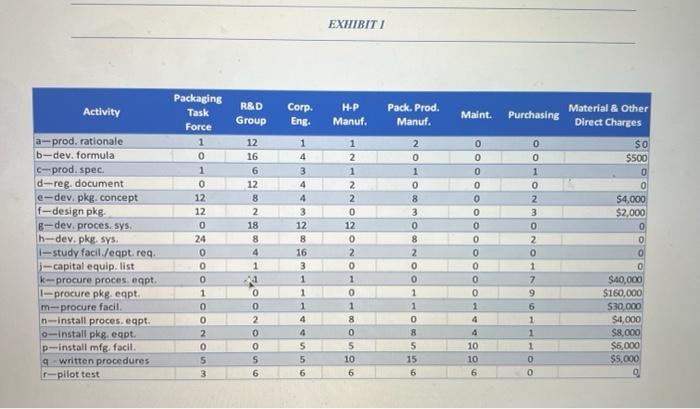
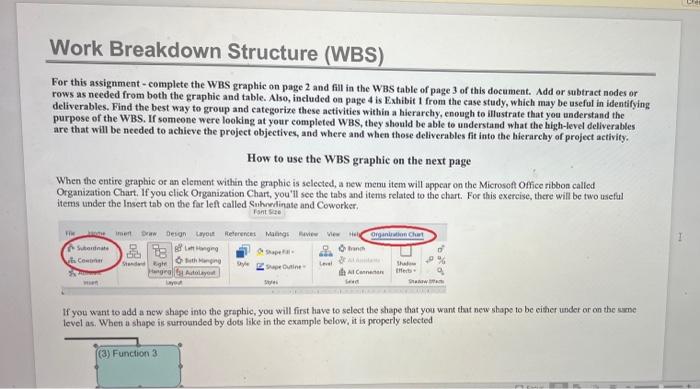
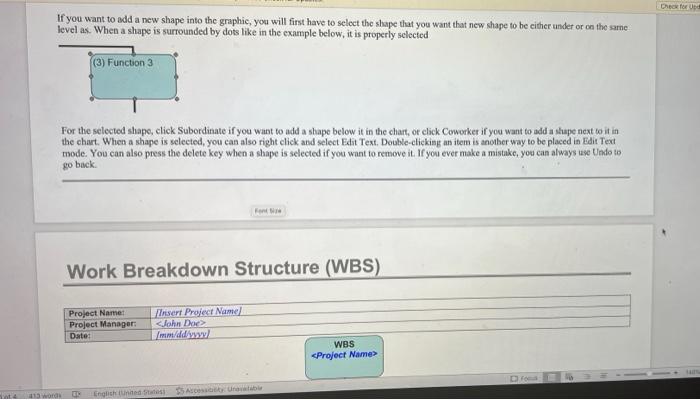
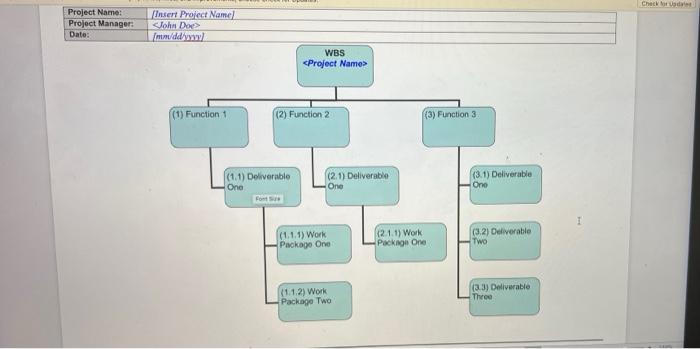

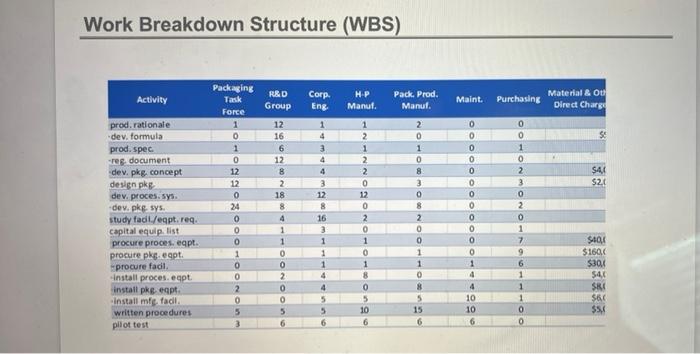
this is the only infornayion that was given
Mason Hospital Products Corp. The following case describes the evolution of a new product and the project devised to take it to market. Mason Hospital Products Corp. has done sufficient new product development at the research and development level to estimate a high likelihood of technical success for a product of assured commercial success: A long-term antiseptic. Management has instructed Magon's Antiseptic Division to make a market entry at the earliest possible time; they have requested a complete plan up to the startup of production. Marketing and other plans following startup of production are to be prepared separately after this plan has been completed. Project responsibility is assigned to the division's Research and Development Group; John Richards, the project scientist who developed the product, is assigned responsibility for project management. Assistance will be required from other parts of the company: Packaging Task Force, R \& D Group; Corporate Engineering; Corporate Purchasing; Hospital Products Manufacturing Group; Packaged Products Manufacturing Group. John was concerned about the scope of the project. He knew from his own experience that a final formula had yet to be developed, although such development was really a "routine" function. The remaining questions had to do with color, odor, and consistency additives rather than any performance-related modification. Fortunately, the major regulatory issues had been resolved and he believed that submission of regulatory documentation would be followed by rapid approval as they already had a letter of approval contingent on final documentation. But there were also issues in packaging that had to be resolved; development of the packaging design was one of his primary concerns at this time. Ultimately, there will have to be manufacturing procedures in accordance with corporate policies and standards: capital equipment selection and procurement, installation of this equipment and startup. John was concerned about defining the project unambiguously. To that end, he obtained an interview with E. B. Mandel, the group vice-president. When he asked Mandel where his responsibility should end, the executive turned the question back to him. John had been prepared for this and said that he would like to regard his part of the project as done when the production process could be turned over to manufacturing. They agreed that according to Mason practice, this would be when the manufacturing operation could produce a 95 percent yield of product (fully packaged) at a level of 80 percent of the full production goal of 10 million liters per year. "But I want you to remember," said Mandel, "that you must meet all current FDA, EPA, and OSHA regulations and you must be in compliance with our internal specification - the one I've got is dated September and is RD78/965. And you know that manufacturing now - quite rightly, 1 feel - insists on full written manufacturing procedures." now-quite rightly, I feel-insists on full written manufacturing procedures." After this discussion, John felt that he had enough information about this aspect to start to pin down what had to be done to achieve these results. His first step in this effort was to meet with P. H. Duncan, the director of research. "You are naive if you think that you can just start right in finalizing the formula," said Duncan. "You must first develop a product rationale (a).2 This is a formally defined process according to company policy. Marketing expects inputs at this stage, manufacturing expects their voice to be heard, and you will have to have approvals from every unit of the company that is involved; all of this is reviewed by the Executive Committee. You should have no trouble if you do your homework, but expect to spend a good eight weeks to get this done." "That certainly stretches things out," said John. "I expected to take 12 weeks to develop the ingredient formula (b) and you know that I can't start to establish product specifications (c) until the formula is complete. That's another three weeks." "Yes, but while you are working on the product specifications you can get going on the regulatory documentation (d). Full internal specifications are not required for that work, but you can't start those documents until the formula is complete." "Yes, and I find it hard to believe that we can push through both preparation of documents and getting approval in three weeks, but Environmental swears it can be done." "Oh. it can be done in this case because of the preparatory work. Of course, I won't say "Oh, it can be done in this case because of the preparatory work. Of course, I won't say that this estimate of three weeks is as certain as our other time estimates. All we need is a change of staff at the Agency and we are in trouble. But once you have both the specifications and the approval, you can immediately start on developing the production processing system (g)." "Yes, and how I wish we could get a lead on that, but the designers say that there is too much uncertainty and they won't move until they have both specifications and regulatory documentation and approval. They are offering pretty fast response; six weeks from start to finish for the processing system." "They are a good crew, John. And of course, you know that you don't have to delay on starting the packaging segment of this project. You can start developing the packaging concept (e) just as soon as the product rationale has been developed. If my experience is any judge, it will take a full eight weeks; you'll have to work to keep the process from running forever." "But as soon as that is finished we can start on the design of the package and its materials (f), which usually takes about six weeks. Once that is done we can start developing the packaging system (h), which shouldn't take longer than eight weeks," concluded John. At "But as soon as that is finished we can start on the design of the package and its materials (f), which usually takes about six weeks. Once that is done we can start developing the packaging system (h), which shouldn't take longer than eight weeks," concluded John. At this point he realized that although Duncan would have general knowledge, he needed to talk directly to the director of manufacturing. "The first step, which follows the completion of the development of processing and packaging systems," said the director of manufacturing, "is to do a complete study of the facilities and equipment requirements (i). You won't be able to get that done in less than four weeks. And that must precede the preparation of the capital equipment list (j) which should take about three-quarters as long. Of course, as soon as the development of both the process system and packaging system are completed, you could start on preparing the written manufacturing facilities procedures (q)." "But," said John, "can I really finish the procedures before I have installed the manufacturing facilities (p)?" "No, quite right. What you can do is get the first phase done, but the last three of the ten weeks it will take to do that will have to wait for the installation of the manufacturing facilities." "Then this means that I really have two phases for the writing, that which can be completed without the manufacturing facilities installation (q), and that which has to wait for them (q)." "True. Now you realize that the last thing you have to do after completing the procedures and installing the equipment and facilities is to run a pilot test (r) which will show that you have reached a satisfactory level?" "Yes. Since that must include debugging, I've estimated a six-week period as adequate." The director of manufacturing assented. John continued, "What I'm not sure of is whether we can run all the installation tasks in parallel." "You can let the purchase orders and carry out the procurement of process equipment (k), packaging equipment ( I), and facilities (m) as soon as the capital equipment list is complete. The installation of each of these types of equipment and facilities can start as soon as the goods are on hand (n,o,p)." "What do you estimate for the times to do these tasks?" asked John. The director of manufacturing estimated 18,8 , and 4 weeks for the purchasing phases for each of the subsystems in that order and four weeks for each of the installations. "Then I can regard my job as done with the delivery of the procedures and when I show my 95 percent yield," said John, and the director of manufacturing agreed, but reminded John that none of the purchasing cycles could start until the capital equipment list had been prepared and approved (j) which he saw as a three-week task. The executive committee of Mason Hospital Products Corporation set a starting date for the project of March 10 and asked John to project a completion date with his submission of The executive committee of Mason Hospital Products Corporation set a starting date for the project of March 10 and asked John to project a completion date with his submission of the plan. The committee's request implied that whatever date John came up with was acceptable, but John knew that he would be expected to show how to shorten the time to complete the project. However, his task in making the schedule was clear; he had to establish the resource requirements and deal with calendar constraints as best as he could. To this end, John had to get an estimate of resources, which he decided to do by making a list of the activities and asking each group involved what was their level of employee input. The results of this survey are shown in Exhibit 1. For example, activity a takes 8 weeks and requires 12 worker-weeks from R\&D, or an average of 1.5 workers for the entire 8-week duration of activity a. For the purposes of overall planning, the accounting department told John that he could estimate a cost of $600 per week per employee. This would enable him to provide a cash flow forecast along with his plan, which the chief accountant said would be expected, something that John had not realized. John consults with Karen Leigh, a peer of his in the R\&D department who successfully managed a similarly resourced project involving new product development from Mason's Antiseptic Division. John is interested in knowing of any difficulties Karen may have experienced during her project, especially in having to communicate with and negotiate resources from so many separate functional groups within the company. To provide John with some historical background on the environment, Karen promised to share some of the notes she collected on her last project, which involved many of the same people. She soon sent John the email below: Subject: Notes from project Congrats on the project! Here are the collected notes I mentioned. I know these aren't all the people you need to worry about but many of these are the same players with which I needed to negotiate and communicate and cooperate just like you will - so I hope this is helpful! E. B. Mandel, the group vice-president-Comes to every stakeholder mecting early and is very interested in the success of the project. He likes to get weekly updates in a status meeting and emails if there are any major roadblocks. You can be sure he will voice his concems whenever there are delays or if the project goes too far over budget. Faye Robinson, FDA - Will likely be the primary regulator assigned and sent to periodically ensure all regulatory compliance. I'm sure you know she has the ability to kill the whole effort. On my project, she requested a status update meeting once a month. Sarika Reddy - Group VP - Hospital Products Manufacturing - Sarika was extremely cooperative and was instrumental in our project being a successful when there were some resource constraints from other departments. Sarika provided us with what resources we needed to fill the gaps. I can tell you that she is very focused on cost. She will attend every meeting but also wants to be included on all project communications. Rusty Springer - Head of Packaging Task Force - Rusty has questions from time to time and he's sure to ask again if he doesn't receive an answer quick enough. Most of his questions have to do with wanting to know when the project will be finished. He does not attend meetings but says he reads the meeting minutes. Rusty not knowing what's going on may cause you some issues since I know he is responsible for an area for which I know you have some concerns. I'd make sure to keep him better informed and not trust that his claim of always reading the mecting minutes means was enough. Sam Andrews - Head of Corporate Engineering - Sam is very outspoken and somewhat intimidating when attending meetings, which is about half of the time. I found that providing Sam the latest updates, especially on how engineering staff are being allocated, and whenever there are any changes that have an Sam Andrews - Head of Corporate Engineering - Sam is very outspoken and somewhat intimidating when attending meetings, which is about half of the time. I found that providing Sam the latest updates, especially on how engineering staff are being allocated, and whenever there are any changes that have an impact those resources, and their availability. P. H. Duncan, the director of research - as you already know, P.H. is an excellent resource. Will attend the stakeholder meetings regularly to help bring everyone together and stress the importance of the collaboration. Is very quick to respond to all types of communication and usually has the answers you need when you need them. I'll dig around some more and send anything else I find that looks useful. Good luck! Karen Leigh, Project Scientist - Antiseptic Division Mason Hospital Products Corp. EXHIBIT I For this assignment - complete the WBS graphic on page 2 and fill in the WBS table of page 3 of this document. Add or subtract nodes or rows as needed from both the graphic and table. Also, included on page 4 is Exhibit 1 from the case study, which may be useful in identifying deliverables. Find the best way to group and categorize these activities within a hierarchy, enough to illustrate that you understand the purpose of the WBS. If someone were looking at your completed WBS, they should be able to understand what the high-level deliverables are that will be needed to achicve the project objectives, and where and when those deliverables fit into the hierarchy of project activity. How to use the WBS graphic on the next page When the entire graphic or an element within the graphic is selected, a new menu item will appear on the Mierosoft Office ribbon called Organization Chart, If you cliek Organization Chart, you'll see the tabs and items related to the chart. For this exercise, there will be two useful items under the lnsert tab on the far left called Smhnedinate and Coworker. If you want to add a ncw shape into the graphic, you will first have to select the shape that you want that new shape to be either under or on the sume level as. When a shape is surrounded by dots like in the example below, it is properly selected If you want to add a new shape into the graphic, you will first have to select the shape that you want that new shape to be cither under or on the same level as. When a shape is surrounded by dots like in the example below, it is properly selected For the selected shape, click Subordinate if you want to add a shape below it in the chart, or click Coworker if you want to add a shape next to it in the chart. When a shape is selected, you can also right click and select Edit Text. Double-chicking an item is another way to be placed in Edit Ted mode. You can also press the delete key when a shape is selected if you want to remove it. If you ever make a mistake, you can always use Undo to go back. Work Breakdown Structure (WBS) \begin{tabular}{|l|l|} \hline Project Name: & [?nsert Project Name] \\ \hline Project Manager: & Shoha Does \\ \hline Date: & [mmddyww] \\ \hline \end{tabular} WBSeProjectName> (1) Function 1 (2) Function 2 (3) Function 3. Work Breakdown Structure (WBS) NOTE: A precedent is any activity or deliverable that would keep this activity from starting until that other activity is finished More on precedence relationships will be covered in Wock 4 of the course. Work Breakdown Structure (WBS) Step by Step Solution
There are 3 Steps involved in it
Step: 1

Get Instant Access to Expert-Tailored Solutions
See step-by-step solutions with expert insights and AI powered tools for academic success
Step: 2

Step: 3

Ace Your Homework with AI
Get the answers you need in no time with our AI-driven, step-by-step assistance
Get Started


